Iron Age burial site
Buried with the pet?
In an Italian necropolis of the late Iron Age, humans and animals were buried together. Researchers at the University of Bern provide new insights into the burial practices and beliefs of a Celtic-Gallic culture.
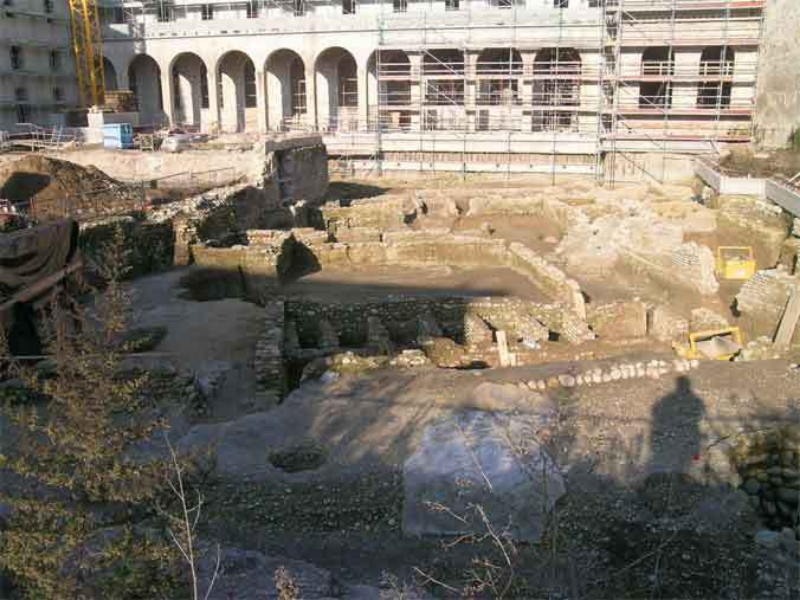
The Seminario Vescovile in Verona, northern Italy, is one of the largest burial sites of the Celtic peoples who crossed the Alps and migrated to the Italian peninsula. The necropolis was built in the late Iron Age, between the third and first centuries BC., used by the Cenomani Gauls, a Celtic-Gallic tribe, and comprises 161 burials. These are largely simple pits covered with stones, with occasional grave goods. Around 10 per cent of the graves contain both human and animal remains. An international study led by Bern, published in the journal Plos One, has now investigated these animal-human burials.
Complex relationships between humans and animals
"Common burials of humans with animals are known from various Iron Age burial sites. For example, the burial of animals that serve as food and indicate offerings to the deceased is widespread. In these graves, there usually are certain parts of animals", explains Zita Laffranchi, lead author of the study from the Institute of Legal Medicine at the University of Bern. However, the importance of animals that played a little role in the diet, such as dogs and horses, is largely unknown.
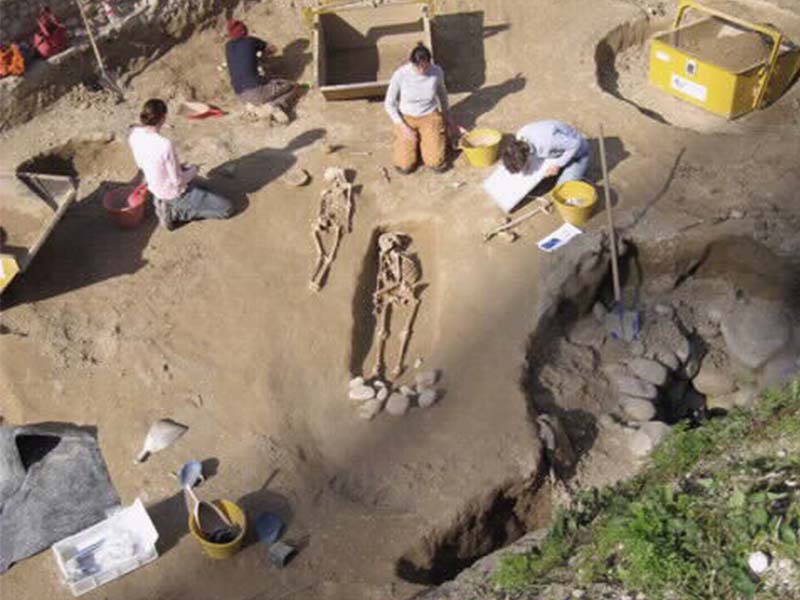
While horses were considered a status symbol and have appeared in funerals since the Bronze Age (2200-800 BC), dog burials have been known since the Palaeolithic period 12,000 years ago. "Previous findings of burials of humans with horses and dogs show that interpretation is difficult because the relationships between humans and their animals are culturally determined and have many facets, such as symbolic, religious, ecological and affective", says Marco Milella from the Institute of Forensic Medicine, senior author of the study.
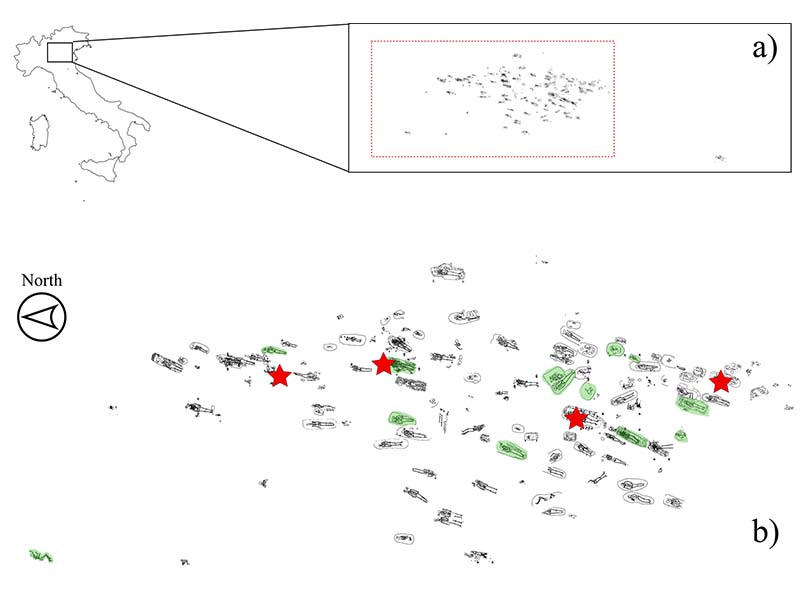
Companions in the afterlife
The people buried with animals in Seminario Vescovile were one adult woman, two adult men and a newborn girl. In the grave of the woman, besides a fully preserved horse skeleton, there were skeletal parts of four other horses, a dog's skull and the remains of other animals, which probably served as food offers. The newborn, a few weeks old, was next to the skeleton of a dog. The middle-aged man was buried together with a small dog, while skeletal parts of a horse were found in the burial of the younger man.
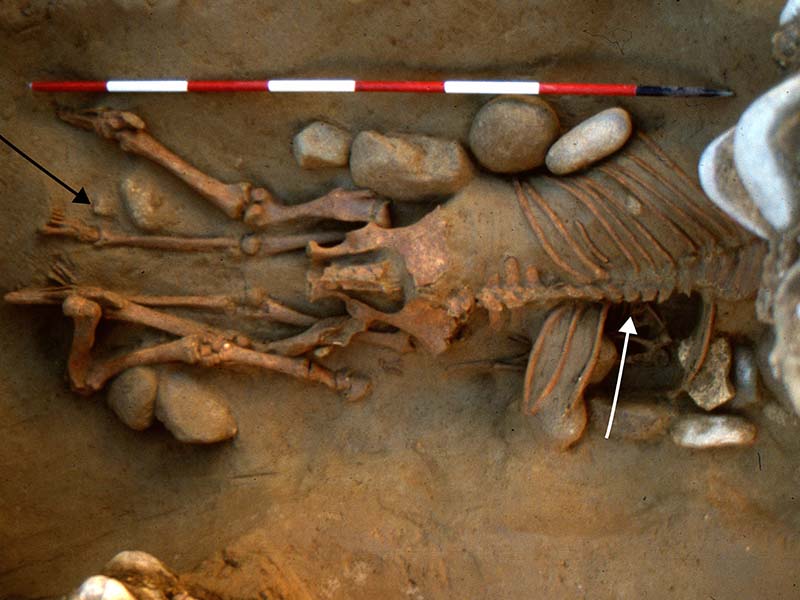
"Funeral rituals are highly formalised and symbolic acts in which communities represent their cultural, social and economic characteristics", says Laffranchi. "The fact that the dog and horse skeletons lack cut marks and are often completely preserved suggests that they were not intended for ritual consumption", she adds. The researchers suspect that the animals served a symbolism associated with dogs and horses in this culture.
Subscribe to the uniAKTUELL newsletter

Stories about research at the University of Bern and the people behind it – gripping, multimedia and free of charge.
There is a well-known association between dogs and the afterlife, which can be found in Ancient Egypt, Scandinavia as well as in the Gallo-Roman culture. Dogs were seen as companions to the afterlife or as guardians of the gate to the afterlife. Horses may be linked to the Celtic goddess Epona, whose name derives from the Celtic word for horse ("epos") and who was revered for fertility and protection of persons after death. The fact that the newborn was buried with a dog, for example, could be related to the cult of the Roman goddess Genita Mana, who stood for fertility and to whom the Romans sacrificed a dog upon birth. Burials of newborns and women with dogs could also be linked to cleansing rituals performed after the death of a newborn to prevent miscarriage or premature death. "But burials with dogs could also be a sign of people's attachment to their pet", Milella explains.
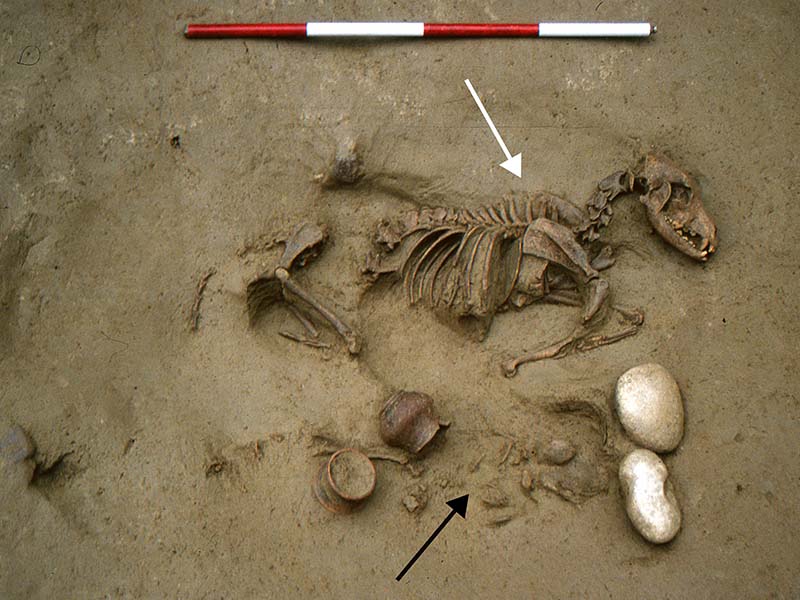
Findings difficult to interpret
The anthropological, zooarchaeological, palaeogenetic and isotopic analyses carried out by the researchers did not reveal any demographic, nutritional or burial-specific relationships or genetic relationships of the people buried with the animals. However, the findings from the Seminario Vescovile bear striking similarities to burials in the same region, as well as to French and British graves dating back to the Iron Age. "This points to cultural contacts and the transfer of traditions", says Milella.
Laffranchi adds: "Funeral rituals are influenced by complex factors and our findings raise new questions." The researchers are convinced that their multidisciplinary approach is suitable for interpreting traces of past burial practices.
Publication details:
Laffranchi Z, Zingale S, Tecchiati U, Amato A, Coia V, Paladin A, Salzani L, Thompson SR, Bersani M, Dori I, Szidat S, Lösch S, Ryan-Despraz J, Arenz G, Zink A, and Milella M: "Until death do us part". A multidisciplinary study on human-animal co-burials from the Late Iron Age necropolis of Seminario Vescovile in Verona (Northern Italy, 3rd-1st c. BCE). PLoS ONE 18(11): e0293434. https://doi.org/10.1371/journal.pone.0293434
About the person
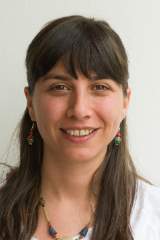
Zita Laffranchi
is a research associate in the SNSF project CELTUDALPS, Department of Anthropology at the Institute of Legal Medicine of the University of Bern.
E-mail: zita.laffranchi@irm.unibe.ch
Tel: +41 31 684 02 08
About the person

Marco Milella
is a researcher and co-leader of the SNSF project CELTUDALPS, Department of Anthropology at the Institute of Legal Medicine of the University of Bern.
E-mail: marco.milella@irm.unibe.ch
Tel: +41 31 684 02 07
The Department of Anthropology at the Institute of Forensic Medicine
At the Institute of Forensic Medicine in Bern, the Department of Anthropology investigates mummies, skeletons and bone fragments against the background of forensic and cultural-historical questions. The research focuses on the identification of unknown deaths and the determination of the cause of death in a forensic context. In the archaeological environment, scientific questions concerning population composition, disease burden, nutrition, social stratification and origin of populations are addressed. The Department of Anthropology uses the following methods for researching material from different regions and temporal contexts: anthropological-morphological and histological diagnostics, mass spectrometry of stable isotope ratios, ancient DNA analyses and imaging techniques. The excavations at the Seminario Vescovile in Verona are part of the "CELTUDALPS" project funded by the Swiss National Science Foundation (SNSF).